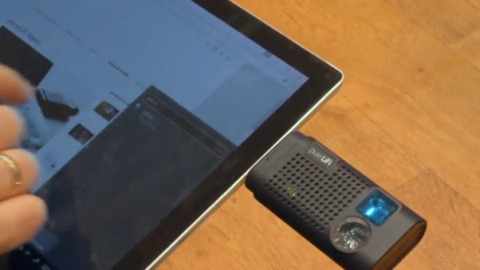
Reuters — A technology that turns the light bulb above your head into an Internet transmitter could have a disruptive impact on the wireless communications market comparable to that of the digital camera on photography, according to developers of pureLi-Fi.
Li-Fi uses high-speed modulation of light-emitting diodes (LED), with the data embedded in the beam, to provide a fast Internet connection. Li-Fi’s advocates say that the technology will provide heightened speed and internet security.
“The way we achieve wireless communication using light is by changing the intensity of the LED light. Effectively we are modulating, or turning the light on and off, millions of times per second,” said Nikola Serafimovski from pureLiFi, adding that the high-speed modulation is imperceptible to the human eye.
LiFi, meaning Light Fidelity, can be used in connected devices in the home, driverless cars and street lights, among others. PureLiFi was formed in 2012 as a spin-out from the University of Edinburgh.
With pureLiFi’s current technology, a small smartphone-sized box is mounted on the ceiling which converts the light from the LED lightbulb into a LiFi signal. A USB dongle attached to a laptop or tablet contains a blue photoreceptor that picks up the signal from the light, as well as an infrared transmitter to send data back.
“The blue eye [on the dongle] is effectively the visible light receiver which picks up the rapid changes in the LED light that’s in the ceiling. Immediately next to it is an infrared LED which provides transmission for the uplink. So the dongle and LIFI offer both uplink, using infrared, and downlink communication from the light to the device,” said Serafimovski.
The LiFi-X dongle is currently too large to be truly practical, the company concedes. Their aim is to shrink it to less than half its current size this year, though eventually they envision it being small enough to be integrated into the devices themselves.
French company Lucibel put the first Li-Fi enabled lightbulb, developed in partnership with pureLiFi, on the market in September 2016. It sold about 100 devices at time of the launch.
While the eye-popping 2,300 euro price tag attached to Lucibel’s Li-Fi enabled bulbs undoubtedly dampened its appeal to many consumers, the company expects prices to decrease in the near future as bigger companies get involved.
“Relationships that we’re developing with the likes of BT, Cisco and Babcock are looking at really deploying the technology for the end customers in areas that they can make use of it best. These include RF-sensitive environments, these include secure environments and things like that. And it is by increasing the ecosystem especially with large players that can deploy volumes that we see the price-point decreasing substantially,” added Serafimovski.
Critics point out that the technology is limited by the need for direct line-of-sight transmission; the data-embedded light can’t travel through walls or round corners, for example.
However, pureLiFi says it won’t replace existing WiFi, but act as a back-up to increasingly congested Internet pathways. The visible light spectrum has a bandwidth potential 10,000 times that of the traditional radio frequency spectrum.
“LiFi will not be a replacement for WiFi. It is about complimenting existing radio frequency communications to add additional spectrum and additional capacity for the growing demand that we’re seeing from mobile users and from our connected lifestyle,” said Serafimovski.
“You would move from 3G or 4G or 5G onto WiFi, onto LiFi, and use all of them at the same time or the best one that is available for what you want to do at that particular time,” he added.
Technology research company TechNavio expects the Global Li-Fi market to grow seven-fold to $565.7 million in 2020, with interest shown by major lighting manufacturers like General Electric (GE) and Philips Lighting boosting the market.







